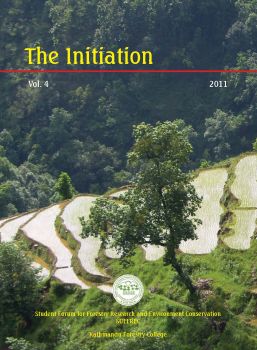The Pack Hunter (Dhole): Received Little Scientific Attention
DOI:
https://doi.org/10.3126/init.v4i0.5531Keywords:
Asiatic Wild Dog, Human-Dhole Conflict, SLCC, Camera TrappingAbstract
The dholes received little scientific attention due to the lower charisma factor than other larger carnivores found in the same areas like Tiger and Snow Leopard. This is the first study of dholes that was conducted in Kanchenjunga Conservation Area (KCA), Nepal in 2010. Camera trapping, sign survey, interview and group discussion with local people were carried out to assess the presence/absence of dholes in KCA, conflict with humans and to know the history of dholes in the area. The camera trapping evidence (Three pictures of dholes caught on camera trap) confirmed the dhole presence in KCA. According to the Snow Leopard Conservation Sub-Committee (SLCC) report about 87.5% of livestock were killed by dholes only in Yamphudin. Conservation education and comprehensive carnivore conservation action plan is recommended for the conservation of dholes.
DOI: http://dx.doi.org/10.3126/init.v4i0.5531
The Initiation Vol.4 2011 8-13

